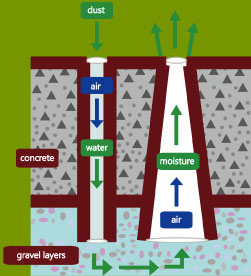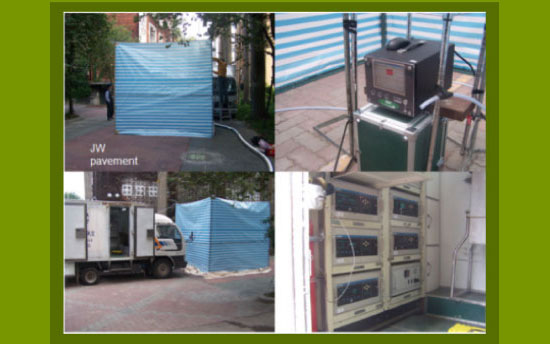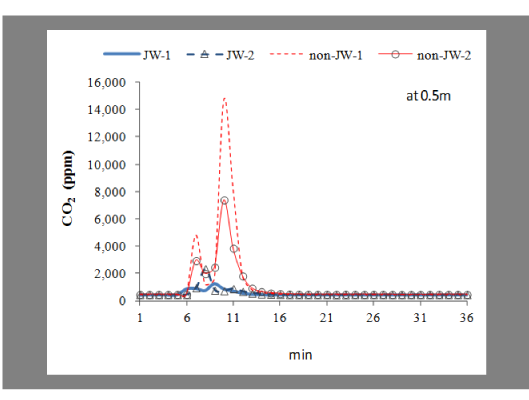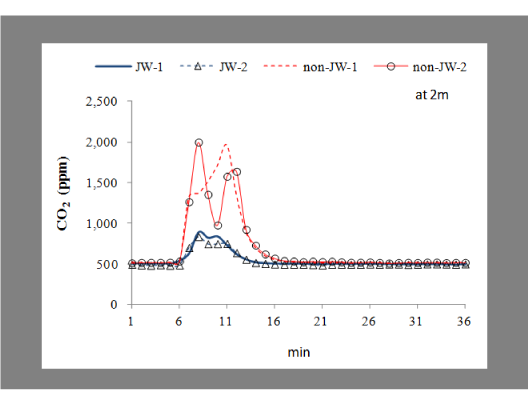JW Pavement EcoTechnology
Greenhouse Gas Reduction & Pollution Reduction
In a natural habitat, the granularity of the soil, sediment and gravel allows the land surface to inspire and expire as conditions change in the subsurface and atmosphere (e.g. temperature change, air pressure). In a metropolis, miles upon square miles of concrete and pavement stifle this respiration and result in a phenomena known as “Heat Island Effect”, closely related to the Greenhouse effect but occuring in a metropolitan center. This leads to rising temperatures and accumulation of deleterious pollutants in the atmosphere, especially vehicle emissions

JW Pavement allows this important surface/subsurface respiration to occur in urban areas through the drainage pipes or “pores” on the JW pavement. At the same time atmospheric vehicle emissions are quickly reduced through this same mechanism. A series of extensive experiments were conducted in concert with the National Taipei University of Technology to measure CO2 levels in an enclosed area covering the JW surface contrasted with a non-JW surface. The results were astonishing and significant.


The data showed that for the JW pavement, after 5 minutes of exhaust emissions, CO2 levels dissipated faster and were more rapidly diluted to normal levels than non-JW pavements by 74%.
At 0.5m height, the averaged level of CO2 over the JW pavement is about 84% lower than that over the non-JW pavement.

At 2m height, the averaged level of CO2 over the JW pavement is about 76% lower than that over the non-JW pavement.

Flood Prevention Bearing Heavy Loads
